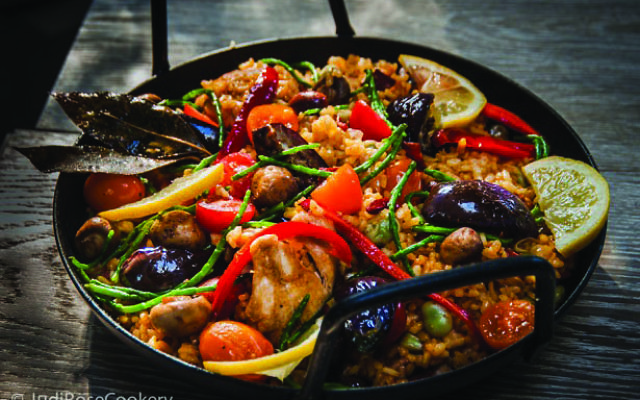Kosher know-how for non-kosher recipes!
Don’t just dismiss a delicious dish if it doesn’t fit your kosher diet. Jenni Frazer has found a way around the rules
Jenni Frazer is a freelance journalist
How often have you leafed enviously through the latest “must-have” cookbook and decided not to buy it, because the non-kosher recipes – and ingredients – outnumber those you can make with a clear, kosher conscience?
It’s a common experience for kosher cooks, and in recent years, the solution has been a flowering of kosher cookbooks. Another answer – mainly in America, although there are signs of it happening here in a smaller way – is for companies to develop kosher versions of avowedly non-kosher products.
Most famous of all of these are the bacon substitutes, usually turkey or beef, which have been highly smoked, to try to give the distinctive “umami” flavour that bacon-eaters love.
One company, Jack’s Gourmet, in New York, makes facon, a kosher cured-beef alternative to bacon that is now one of its best-selling products. Jack Silberstein, the company’s chief executive, says: “It’s the same process as you would do with pork, but we do it with beef. We dry cure it over a period of time so we’re actually pulling moisture out and concentrating the flavour, so that when you do cook it you get that really crispy effect. It is a little salty, just like bacon.”
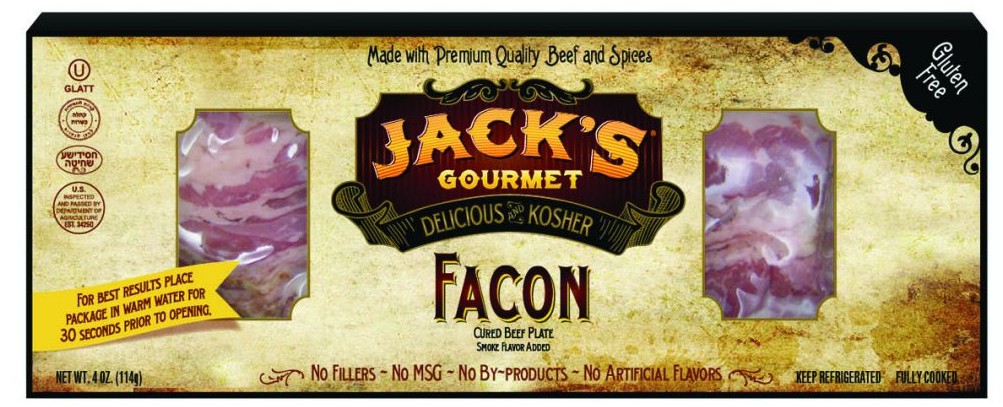
Another answer may lie with scientists at Oregon State University, who have patented a red algae seaweed, called dulse, which apparently tastes just like… bacon. Israeli chefs are interested in this, because the deep-fried dulse replicates bacon flavour and, unlike facon, remains vegetarian.
These products are not, so far, available in the UK, and sometimes, the urge to make something a bit different leads to ingenious answers.
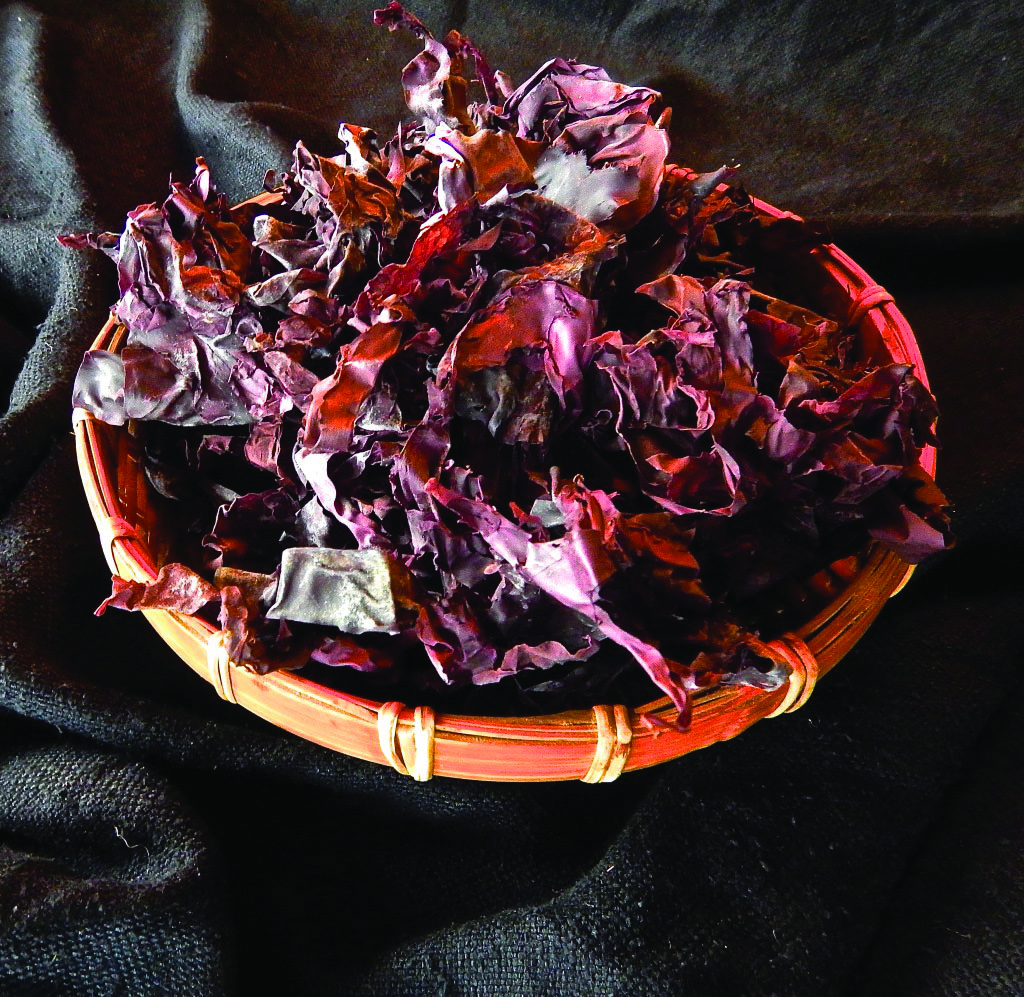
We spoke to four of the best-known kosher cookery writers who were in London this summer to take part in the annual Gefiltefest food festival.
Each had tricks up her sleeve to change the profane into the edible, and were full of ideas for the adventurous kosher cook.
First up was Amelia Saltsman, the California-based daughter of a Romanian mother and Iraqi father, who met in the Israeli army and emigrated to Los Angeles, where Amelia grew up.

The author of The Seasonal Jewish Kitchen, she says: “My philosophy is to not think in terms of substitutes, but to seek dishes and components that are naturally appropriate to the laws of kashrut. ‘Substitute’ too often creates a sense of settling for second-best.
“Desserts, of course, often pose the biggest hurdles. Instead of using margarine or non-dairy toppings to make a butter-based recipe compatible with a meat meal, try instead to make cakes that call for flavourful, healthy oils, and whose chemistry has already been worked out to produce the best results. Olive oil cakes, for instance, are traditional in olive and wine-growing regions. The oil is a key flavour component, not simply a fat (I have a recipe for an olive oil and polenta blood orange upside-down cake in my book).
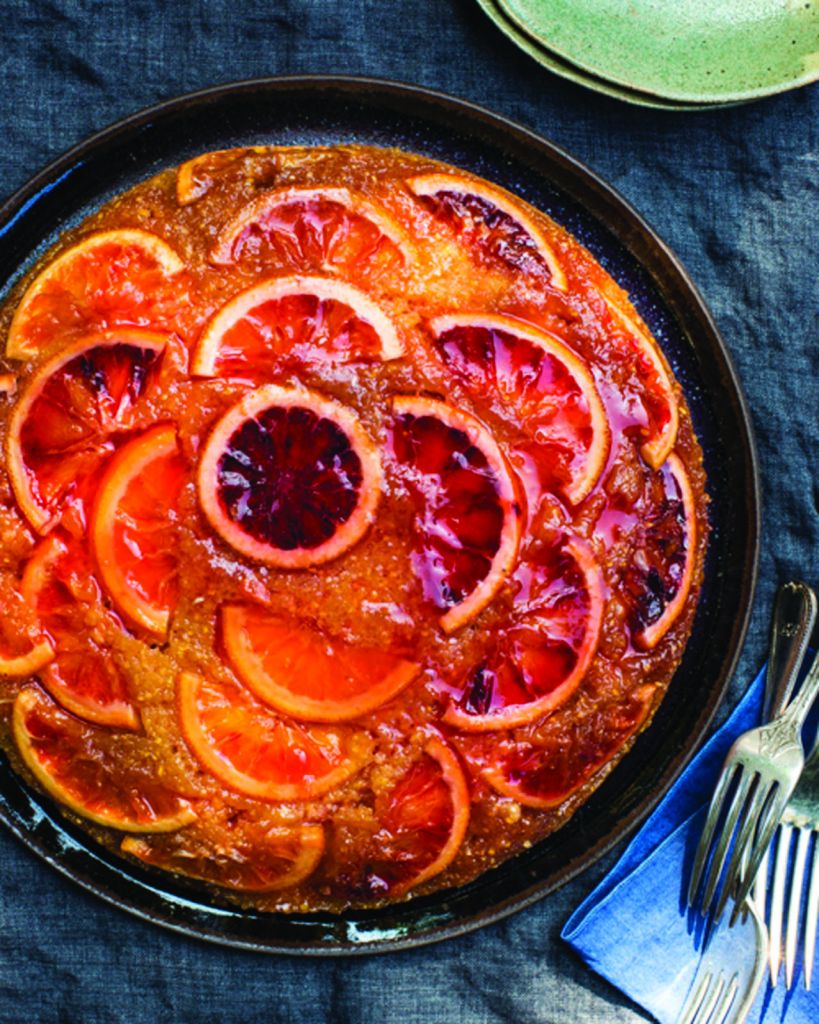
“Similarly, walnut oil is an amazing fat that produces a delicate nut flavour in cakes (as in my semolina walnut oil cake with coffee hawaij). This is a very different approach from courgette or honey cakes that use bland vegetable oil as a substitute for butter. I recommend avocado oil when one is looking for buttery flavour and mouthfeel.
Coconut oil is also popular, but be sure it is compatible with the flavours of your recipe. Coconut cream whips and holds peaks, so it can be used in compatible desserts.
“On the savoury side, I again turn to traditional components that naturally comply. To mimic the qualities bacon has (meaty, fat-rich, salty, smoky), use gribenes, smoked onions, smoked salt, smoked and dried tomatoes, smoked fish, smoked duck breast, goose prosciutto, beef or lamb sausage. Also, caramelised onions are a classic Middle Eastern and Persian element to bring parev ‘umami’ quality to dairy dishes”.
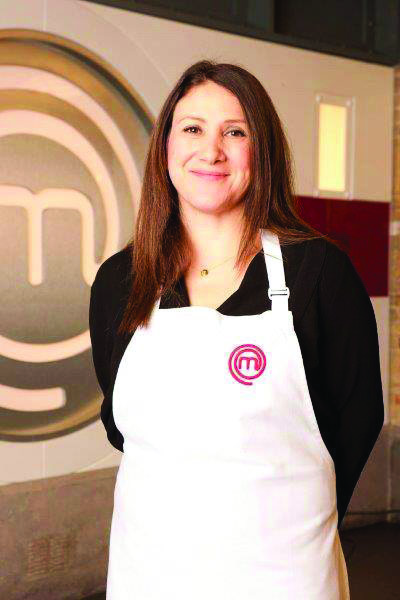
Emma Spitzer was a finalist in MasterChef 2015 and now runs a company offering private catering. Like Amelia, she is also a fan of coconut milk, which she uses in desserts in place of cream. Emma says: “If you pop a can of coconut milk in the fridge for 24 hours, then remove only the hard solids from the top and whip with sugar, you have a great cream alternative. I make a nice banofee sundae with it as a parev dessert.”
Sometimes the substitution is to try to replicate the depth of flavour in a dish: mushrooms are often suggested in exchange for bacon in a recipe. But Emma suggests swapping aubergine for red meat, useful for both kosher and vegetarian cooks.
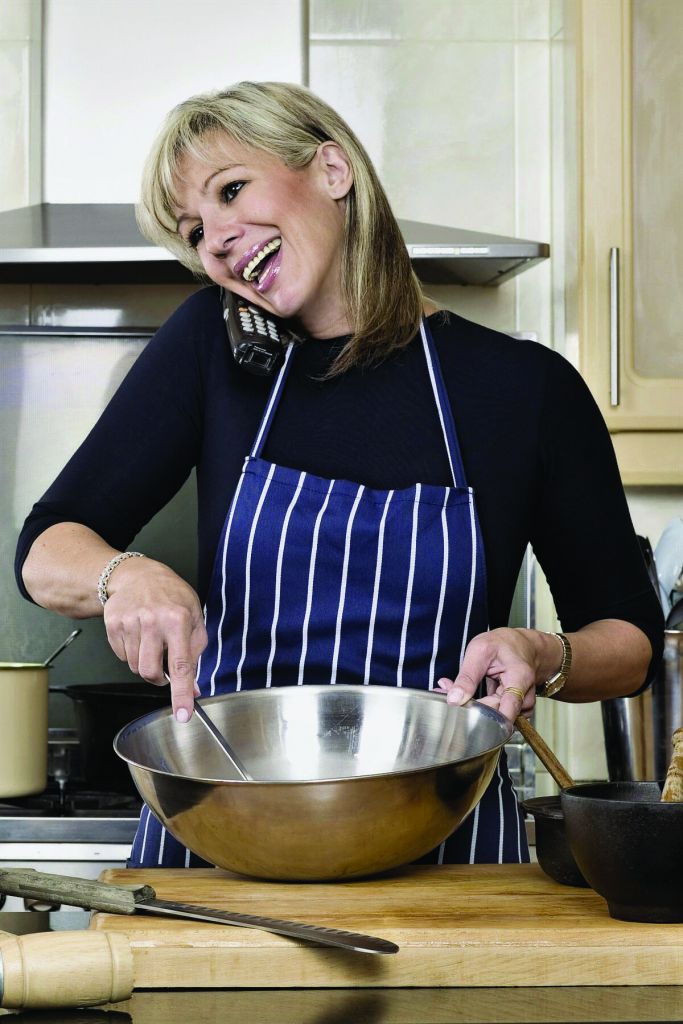
Sharon Lurie, famous for her book Cooking With The Kosher Butcher’s Wife, is based in South Africa and says that substitution “plays a big part in SA food”. For “mock crayfish,” Sharon says: “I’ve had great success with Scottish or Norwegian salmon and a little haddock added (your smoked cod). Now a tip from my mother (what’s a kosher recipe without a tip from a mother?)… Microwaving or steaming the fish whole or, rather deboned, and placed side by side, then allowing it to firm up in the fridge, helps to keep the fish looking like flakes of fish and not a mush.”
As befits a kosher butcher’s wife – she really is – Sharon says most of her family are lactose intolerant and also eat only gluten-free food. “I do a huge amount of substituting,” she says. She’s a fan of Rich’s non-dairy creamer and Alpro soy cream, but often substitutes coconut milk or cream for regular milk in soups, cakes and desserts. “It’s also great for creamed broccoli or cauliflower.
“I substitute cornflour in a lot of dishes when I need them to be gluten-free. I always use tapioca and potato flour as a batter for my fried fish, never regular flour – so puffy and crispy.
I use almond flour in my biscuits instead of regular flour, which keeps them gluten-free. I always substitute cornflakes for breadcrumbs and in fruit salads, I use Sprite instead of orange juice, as it keeps it fresher and crispier longer.”
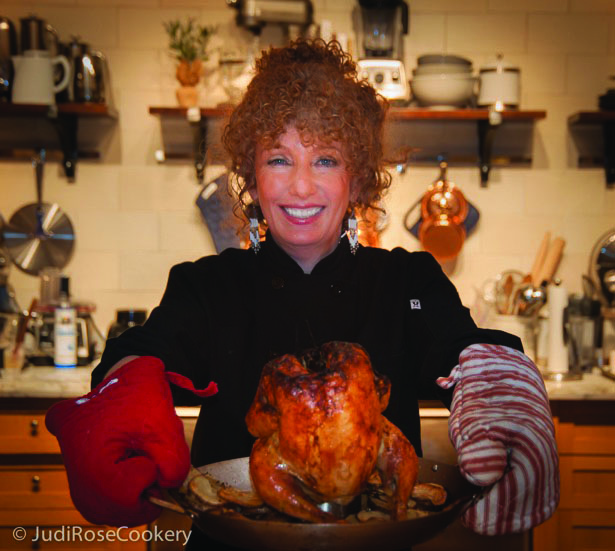
Judi Rose is a cookery writer whose name is one of the most famous in the world of kosher cuisine. She is the daughter of the late Evelyn Rose, the doyenne of Jewish cookbook writers, but has had a long career in her own right in food writing and teaching, mainly in New York.
Judi’s now back living and working in the UK and says that food substitution for the kosher cook is dependent on three things: flavour, texture and appearance.
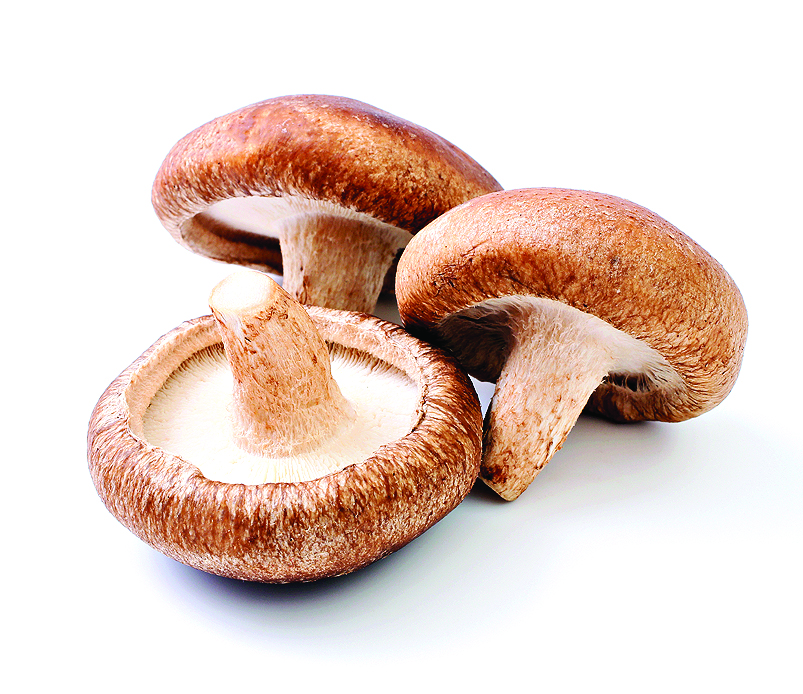
As far as bacon goes, Judi’s substitutes vary according to the part bacon plays in the dish. “If you want, for example, to reproduce bacon sprinkles, then try frying shiitake mushrooms crisped in olive oil and butter and with smoked paprika added. Or you could try breadcrumbs with smoked paprika, or sautéed crispy shallots.”
Aware of aping the customs of the non-Jew, Judi says that in some cases you might just want to make something else. It’s not necessary, she believes, to make diners believe they are actually eating lobster or pork. In recipes for seafood, where it’s important to offer texture, Judi suggests substituting tuna or a soft white fish that flakes easily, if you’d like to serve New England crab cakes. In place of lobster, she thinks halibut would work, or for prawns or scallops, you could try halibut, bream or hake. Recipes with chicken and yogurt get the coconut milk treatment from Judi, who adds lime or lemon juice.
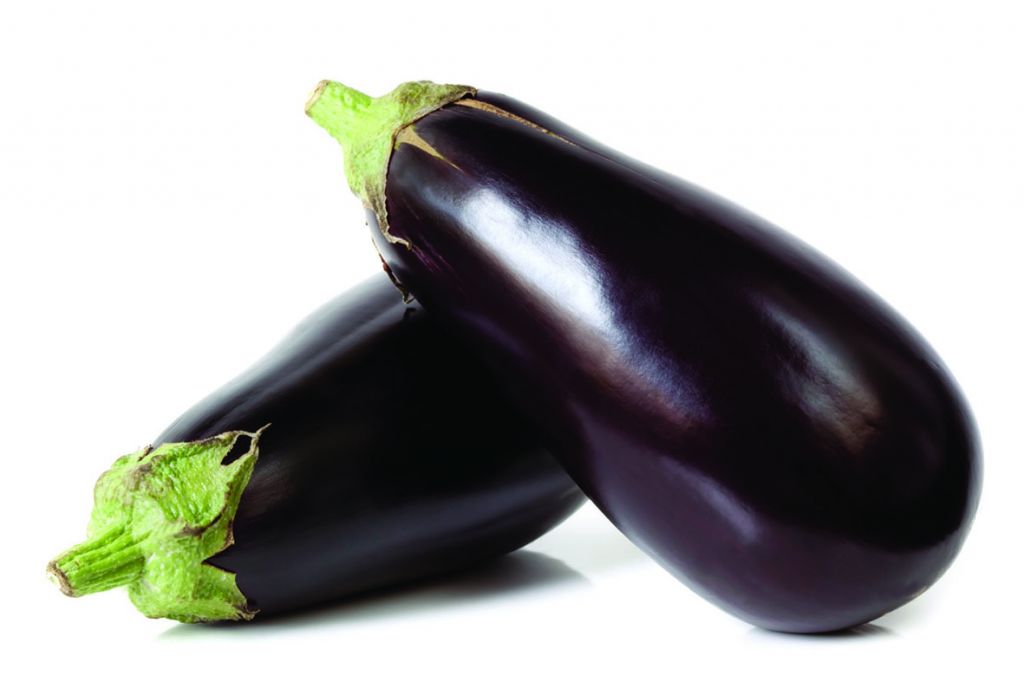
For dishes such as coq au vin, Judi recommends sliced kosher salami to provide a strong flavour base, “but you could do equally well with olives, anchovies, or slow roasted tomatoes,” she says.
And, like Emma Spitzer, Judi is a fan of aubergine to replace meat, “particularly if you are trying to achieve a structural effect”. If you want to make a mean kosher moussaka, she recommends dark chicken thigh meat and coconut milk – “you can get very close to the original”.
Like all the other cooks, Judi reckons there is a kosher answer to almost every non-kosher problem. So maybe it’s time, with these tips in mind, to go back to the Delias and the Jamies, and see where a bit of imaginative substitution can take you.
Judi Rose’s chicken and chorizo paella (Serves 6-8 )
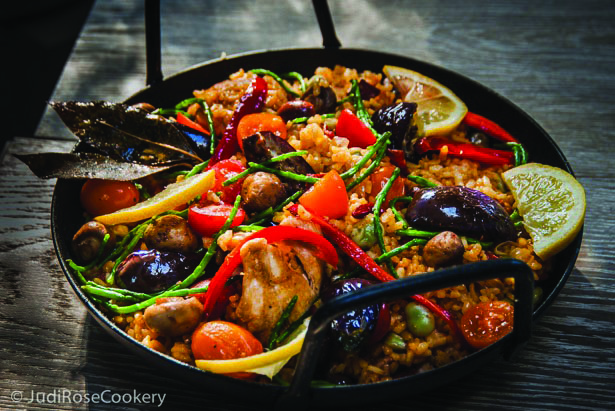
Ingredients
- 4 baby aubergines – quartered
- 1 tsp fine sea salt
- 4 tbsp olive oil
- 600g/1lb 5oz chicken thigh fillets
- freshly ground black pepper
- 150g/ 5oz button mushrooms
- 1 pointed sweet red pepper – sliced
- 3 cloves of garlic
- 150g/5oz sliced chorizo
- 1 onion – finely chopped
- 2 bay leaves
- 1 large tomato – chopped
- pinch saffron threads
- 2 tsp sweet paprika
- 1/2 tsp hot paprika, or a tsp cayenne
- 350g/12oz paella rice
- 1 chicken stock cube
- 1 litre /1 3/4 strained chicken soup or chicken stock
- 2 tbsp broad beans
- 100ml /3fl oz (large glug) dry sherry
- 6-8 colouful baby tomatoes – halved
- 2 tbsp pitted Kalamata olives
- 75g/2 oz (a handful) samphire
- lemon – thinly sliced
Method
- Toss the aubergines with a teaspoon of salt (this reduces the amount of oil they absorb when fried).
- Preheat a large deep frying pan, ideally 28cm/11 inch in diameter, for 3 minutes then add the oil. Season the chicken with salt and black pepper, then add to the hot oil, and fry over high heat until golden brown on both sides. Transfer the chicken to a plate.
- Add the mushrooms and aubergines (cut side down) to the pan, then sauté over high heat until the aubergine is soft and golden brown, adding more oil if the pan gets dry. Add the red pepper and one clove of the garlic and stir fry for a minute. Transfer all the vegetables to the chicken plate.
- Add the chorizo and onion to the pan, and cook gently until the onion is soft, then add the bay leaves, chopped tomato, remaining garlic crushed in a press, saffron and both paprikas. Add the rice and stir-fry for a couple of minutes. The recipe can be prepared to this stage up to two hours ahead.
- Bring the stock to a simmer. Add the broad beans, hot stock and sherry to the rice and season with half the sea salt and 10 grinds of black pepper. Simmer gently, uncovered, stirring occasionally, for 12 to 14 minutes or until the rice is tender but still has some bite, and most but not all of the liquid has evaporated; add a little more sherry or water if it gets dry before the rice is ready.
- Check the seasoning and add salt, pepper or hot paprika to taste, nestle chicken pieces in the rice and arrange the cooked vegetables, baby tomatoes and olives on top. Reheat until steaming, then cover and rest for 10 to 15 mins.
- While the rice is resting, blanch the samphire in boiling water for a minute, drain and rinse with cold water.
- Before serving, scatter the samphire over the paella, garnish with lemon slices, and serve with chilled rosé.
Peach with Pavlova and Raspberry sauce (Serves 10)
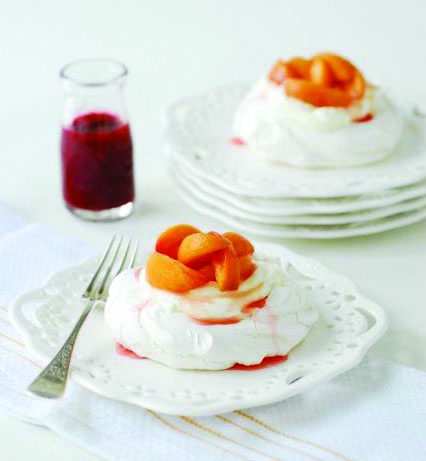
Ingredients
For the pavlova
- 2 egg whites – at room temperature
- 1 1/2 cups superfine sugar
- 1/2 teaspoon vanilla extract
- 1 teaspoon vinegar or strained lemon juice
- 1 teaspoon cornstarch
- 4 tablespoons boiling water
For the sauce
- 1/3 cup granulated sugar
- 1/4 cup water
- 2 half-pint baskets raspberries
- Juice of 1 orange
- 2 teaspoons kirsch (optional)
- 4 or 5 large ripe peaches
- 2 tablespoons granulated sugar
Method
- Preheat oven to 180°C (350°F). Line a large baking sheet with aluminium foil, shiny side down. Place all the meringue ingredients in an impeccably clean bowl of an electric mixer, and beat on high speed until very stiff and glossy, 7 to 15 minutes, depending on the power of your mixer. Working quickly, and using a spatula, spread the mixture onto the prepared baking sheet into a circle or
oval about 10 inches in diameter, swirling the edges of the meringue into free-form peaks and creating a “valley” in
the centre. Or, for individual shells, spoon 10 dollops of meringue mixture several inches apart on the pan, and shape as directed. - 2. Bake for 10 minutes and reduce the heat to 120/130°C (250°F). Bake a large pavlova for 45 minutes longer in an electric oven, or for 1 hour longer in a gas oven. Bake individual shells 30 or 45 minutes, respectively. Allow to cool completely in the oven with the oven door ajar, about three hours or up to overnight, then peel the foil away. The shell(s) may be stored in an airtight container at room temperature for up to two weeks.
- To make the sauce, in a small pot, heat the granulated sugar and water over medium heat, stirring frequently, until the sugar dissolves, about one minute. Remove from the heat and let cool slightly. Put the sugar syrup, berries, orange juice, and kirsch in a blender and process until smooth. Strain the sauce through a fine-mesh sieve. You should have about 1 1/2 cups.
- To assemble the dessert, peel the peaches and cut into 1/2-inch-thick slices. Place in a bowl, stir in the granulated sugar, and let stand, or macerate, until the juices run, 30 to 60 minutes. Place the large shell on a platter, or the smaller shells on individual plates. Spread the centre with the whipped cream and pile the peaches on top, allowing some to tumble onto the edge of the plate. Cut the large pavlova into wedges to serve. Pour raspberry sauce over, or around, each serving.
- Adapted with permission from The Santa Monica
Farmers’ Market Cookbook by Amelia Saltsman
(2007, Blenheim Press)

Thank you for helping to make Jewish News the leading source of news and opinion for the UK Jewish community. Today we're asking for your invaluable help to continue putting our community first in everything we do.
For as little as £5 a month you can help sustain the vital work we do in celebrating and standing up for Jewish life in Britain.
Jewish News holds our community together and keeps us connected. Like a synagogue, it’s where people turn to feel part of something bigger. It also proudly shows the rest of Britain the vibrancy and rich culture of modern Jewish life.
You can make a quick and easy one-off or monthly contribution of £5, £10, £20 or any other sum you’re comfortable with.
100% of your donation will help us continue celebrating our community, in all its dynamic diversity...
Engaging
Being a community platform means so much more than producing a newspaper and website. One of our proudest roles is media partnering with our invaluable charities to amplify the outstanding work they do to help us all.
Celebrating
There’s no shortage of oys in the world but Jewish News takes every opportunity to celebrate the joys too, through projects like Night of Heroes, 40 Under 40 and other compelling countdowns that make the community kvell with pride.
Pioneering
In the first collaboration between media outlets from different faiths, Jewish News worked with British Muslim TV and Church Times to produce a list of young activists leading the way on interfaith understanding.
Campaigning
Royal Mail issued a stamp honouring Holocaust hero Sir Nicholas Winton after a Jewish News campaign attracted more than 100,000 backers. Jewish Newsalso produces special editions of the paper highlighting pressing issues including mental health and Holocaust remembrance.
Easy access
In an age when news is readily accessible, Jewish News provides high-quality content free online and offline, removing any financial barriers to connecting people.
Voice of our community to wider society
The Jewish News team regularly appears on TV, radio and on the pages of the national press to comment on stories about the Jewish community. Easy access to the paper on the streets of London also means Jewish News provides an invaluable window into the community for the country at large.
We hope you agree all this is worth preserving.
- Food
- Gefiltefest
- Jack’s Gourmet
- Jack Silberstein
- Oregon State University
- dulse
- London
- Amelia Saltsman
- The Seasonal Jewish Kitchen
- Emma Spitzer
- MasterChef
- MasterChef 2015
- Sharon Lurie
- Cooking With The Kosher Butcher’s Wife
- Kosher food
- vegetarian food
- Judi Rose
- non-Jew
- chicken
- chorizo
- summer dining supplement
- Kosher Culture


